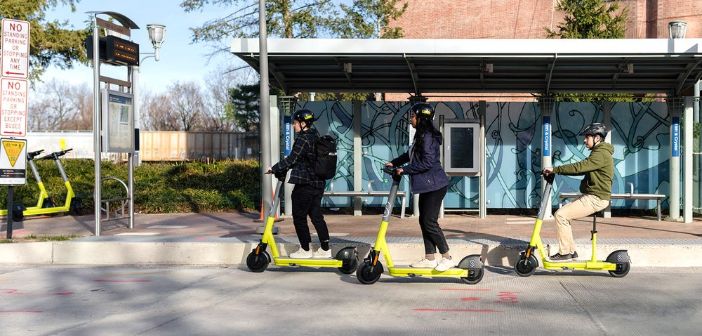Micromobility engineering firm Superpedestrian and the Cities Today Institute, a peer-to-peer network for urban mobility and innovation leaders, have released a report on how e-scooters can better integrate with public transportation systems all over the world.
The report brings together government, system operators and NGOs to identify new and existing solutions such as mobility hubs, fare integration across modes to lower trip costs, and equity programmes that expand access.
According to the study, while e-scooters were initially a small niche in the transportation market, the technology has become an integral part of how people get around. In recent findings, Superpedestrian reported that two-thirds of its e-scooter trips were not related to tourism or recreational use, but for commuting to work, to school and other daily necessities. In Lisbon, 23% of Superpedestrian’s e-scooter trips averted a car journey, while in San Diego, that figure is 32%.
To increase the use of micromobility to reduce car trips and expand transportation access, the new report examines cities as diverse as Pittsburgh and Madrid for solutions. The report urges cities to consider establishing intermodal transportation hubs, modelled on Move PGH in Pittsburgh, by installing e-scooter parking at important public transit stops, giving riders a wider set of options all in one place.
It also suggests integrating micromobility fare systems with public transit fares, to lower costs for riders, while improving on-the-ground information and integrated trip planning features, to make intermodal trips easier to identify and plan.
Furthermore, the report calls for equity programmes to be expanded in micromobility, which have the highest rates of public transit integration. Superpedestrian added its LINK-Up and LINK Serv riders, which serve veterans and riders on public assistance, are over 10 times more likely to use scooters to connect to a transit stop than other destinations.
The report also recommended deploying e-scooters to fill overnight gaps in public transit. Superpedestrian said its e-scooters are available 24 hours a day in most of its cities. This service is valuable to riders who work night shifts or leave for work early in the morning, guaranteeing that riders always have an option to get to work and return home.
“Micromobility is real transportation. Based on evidence in our cities across the globe, we know that when micromobility and public transit are more seamlessly connected, they offer a more compelling alternative to private car use,” said Paul White, senior director of public affairs at Superpedestrian.
“At Superpedestrian, we’re looking to deepen that integration to not only increase the use of shared e-scooters, but to increase the accessibility of public transit as well.”





